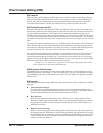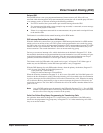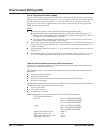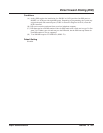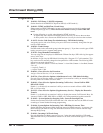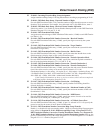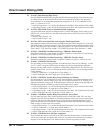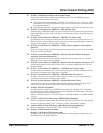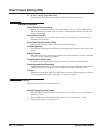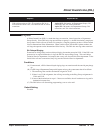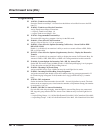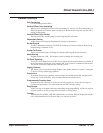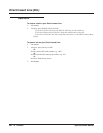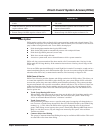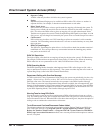
Direct Inward Dialing (DID)
288 ◆ Features Aspire Software Manual
➻ 81-02-01 : DIOPU Initial Data Setup
Make sure the DID Trunk Timer settings are compatible with your local telco.
Related Features
Central Office Calls, Answering
When a call is transferred because of Call Forwarding No Answer, Call Forwarding Busy, or
DND, the Reason for Transfer option can display to the transferred extension why the call is
ringing to their phone.
Direct Inward Line (DIL)
DILs also provide a way for outside callers to dial a system extension, virtual extension or
Department Group directly.
Direct Inward System Access (DISA)
DISA also allows outside callers to dial system extensions directly.
Off Hook Signaling
The Off Hook Signaling provide DID calls with signaling options. Refer to this feature for the
specifics.
Paging, External
DID trunks will not ring external page speakers. Only trunks defined as “normal” in Program
22-02-01 will ring external page speakers.
Programmable Function Keys
To simplify answering DID calls, assign function keys as line keys for the DID trunks.
Station Message Detail Recording
SMDR can print trunk port names or received dialed number for ANI/DNIS or DID trunks. If
enabled, DNIS digits can be printed on the SMDR reports instead of the trunk name.
Transfer
Transferred calls on DISA, DID, DIL, ISDN trunks, or from the VRS can display the reason a
call is being transferred (Call Forward, Busy, No Answer, or DND).
Operation
DID calls ring extensions like normal trunk calls.
Manually Changing a Time Pattern
1. Press DID Mode Switch key (PGM 15-07 or SC 851: 88) or dial the service code (defined in
Program 11-10-35).
2. Enter the DID Conversation Table Number (Aspire S: 1-8, Aspire M/L/XL: 1-100).
3. Enter the time pattern to be assigned (1-8).



